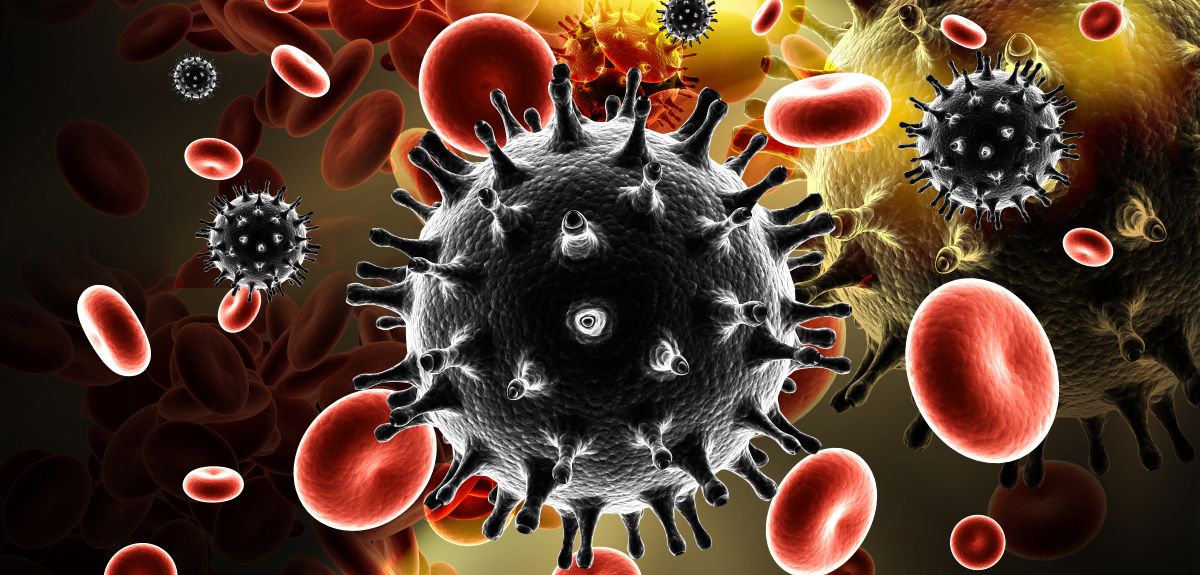
Image: Shutterstock
Protease inhibitors safer than thought for pregnant women with HIV
University of Oxford researchers assessed evidence from 34 studies, involving over 57,000 pregnant women with HIV, and found that protease inhibitor-based antiretroviral therapies significantly increased the risk of babies being small or very small for their gestational age, but there were no other adverse pregnancy outcomes, compared to therapies without protease inhibitors.
Globally, more than 37 million people were living with HIV in 2020, including 19 million women of childbearing age (UNAIDS). Each year, around 1.3 million of these women become pregnant, most of whom live in sub-Saharan Africa where rates of maternal and child mortality remain high.
Antiretroviral therapy is recommended for all pregnant women living with HIV, since this plays a crucial role in improving maternal health and reducing transmission of HIV from mother to child. However, to date there has been a critical lack of evidence on whether antiretroviral therapies increase the risk of adverse pregnancy outcomes such as preterm birth, low birth weight, stillbirth, and babies being small for their gestational age.*
In particular, there has been concern about a type of antiretroviral drug called protease inhibitors (including atazanavir, lopinavir, and darunavir). Current guidelines recommend that protease inhibitor-based therapies should be used in pregnancy only if ‘first-line’ treatments (such as integrase and reverse-transcriptase based treatments) are either unsuitable or unavailable. These guidelines also often advise against the use of a specific protease inhibitor, lopinavir/ritonavir (LPV/r), citing an increased risk of preterm birth. However, these recommendations are based on limited evidence, and can restrict treatment options for pregnant women with HIV.
To address this knowledge gap, researchers from the National Perinatal Epidemiology Unit (NPEU) at Oxford Population Health, have conducted the largest review of the evidence on pregnancy outcomes for a range of antiretroviral therapies. This included a comparison of protease inhibitors vs non-protease inhibitor-based antiretroviral therapies and comparisons of different types of protease inhibitors in relation to the risk of 11 specific pregnancy outcomes for women living with HIV.** The analysis included 34 studies conducted between 1980 and 2020, involving over 57,000 pregnant women living with HIV in 22 different countries.
The study found that overall, protease inhibitors were associated with an increased risk of babies being small or very small for their gestational age, compared with non-protease inhibitor antiretroviral therapies (24% and 40% higher risk, respectively). However, protease inhibitors were not associated with an increased risk of pre-term birth or any other adverse pregnancy outcome. No significant differences in pregnancy outcomes were found between the three protease inhibitor therapies lopinavir, atazanavir, and darunavir.
Dr Joris Hemelaar (NPEU), the senior author for the study, said: ‘Antiretroviral therapy in pregnancy has clear benefits for maternal health and prevention of HIV transmission to the child, but our study has shown for the first time that protease inhibitors are associated with babies being small or very small for their gestational age. However, there was no increased risk of preterm birth, or any other adverse pregnancy outcomes. This means protease inhibitors remain an important option for pregnant women living with HIV if other treatments are unsuitable, for example due to drug resistance, or unavailable. The evidence presented here indicates that the commonly used protease inhibitors atazanavir, lopinavir, and darunavir are comparable with regard to perinatal outcomes, which should inform international treatment guidelines.
‘As the global number of pregnant women living with HIV receiving antiretroviral therapy increases, women should be assisted in making an informed decision about the use of antiretroviral therapy in pregnancy, taking account of all available evidence. Their choice of therapy should take into consideration all relevant factors besides safety and pregnancy outcome data, including the extent to which the virus can be suppressed, adverse drug effects, adherence to drug prescriptions, antiretroviral drug resistance, drug interactions, drug cost and availability.’
With over 70% of the studies assessed being conducted in high-income countries, Dr Hemelaar added that there is an urgent need for more research on pregnancy outcomes from different antiretroviral treatments in low- to middle-income countries, where the burden of HIV is highest.
Professor Yvonne Gilleece, a spokesperson for the British HIV Association (BHIVA) and immediate past chair of the BHIVA guidelines on the management of HIV in pregnancy and the post-partum period said: ‘Pregnancy is a unique life situation in which we must consider the safety of both the birthing parent and the baby. Due to ongoing under-representation of all women in clinical trials, but particularly pregnant women, we do not have enough evidence on which to base all our management decisions. This systematic review includes large numbers of pregnant women living with HIV and can therefore improve an informed discussion regarding the safety of the use of protease inhibitors during pregnancy.’
The full study can be read in eClinicalMedicine.
* Small for gestational age means that a foetus or an infant is smaller than normal for the baby's sex and gestational age, defined as <10th percentile. Very small for gestational age was defined as <3rd percentile.
** The full range of outcomes investigated was preterm birth, very preterm birth, spontaneous preterm birth, small for gestational age, very small for gestational age, low birth weight, very low birth weight, term low birth weight, preterm low birth weight, stillbirth, and neonatal death.
 New study finds common virus may improve skin cancer treatment outcomes
New study finds common virus may improve skin cancer treatment outcomes
 Expert Comment: How can we encourage engagement with online fact-checking?
Expert Comment: How can we encourage engagement with online fact-checking?